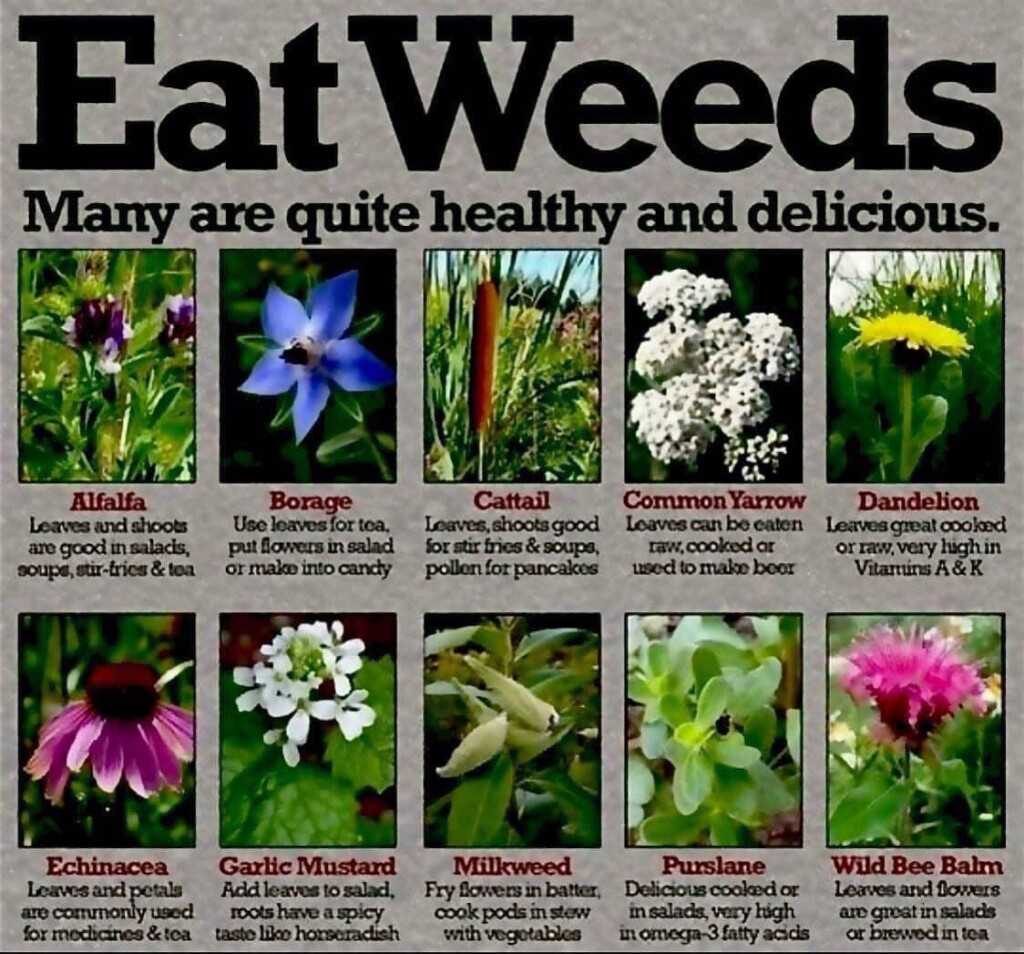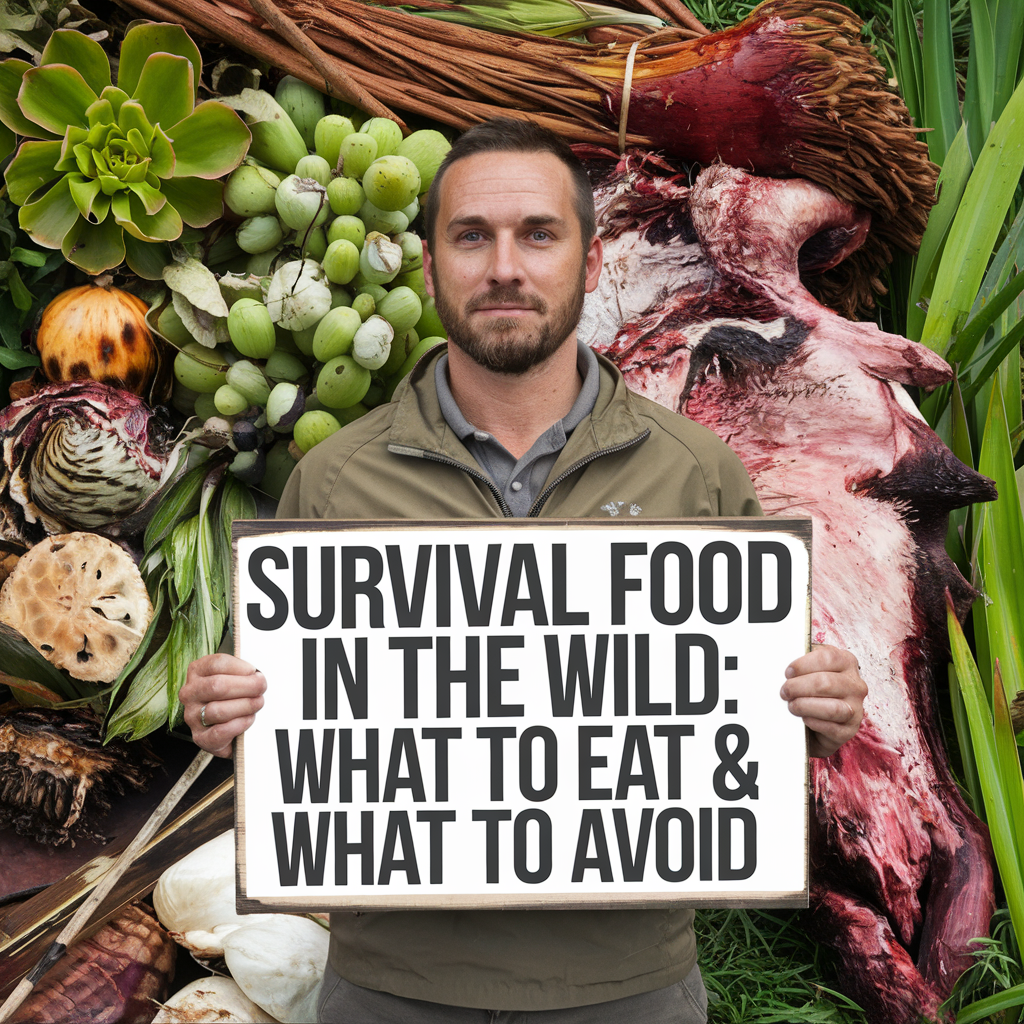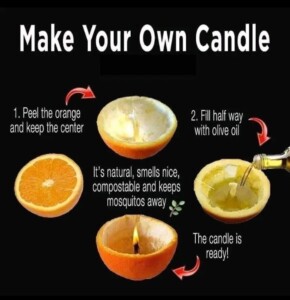In our manicured lawns and well-tended gardens, we often overlook the potential nutritional powerhouses that grow underfoot. Many of the weeds we routinely pull out and discard are not only edible but also packed with essential nutrients. In a survival situation, recognizing and utilizing these plants can make the difference between life and death. Here’s a comprehensive guide to the edible weeds that might just save your life.

Dandelion (Taraxacum officinale)
Dandelions are among the most recognized weeds worldwide. Every part of the dandelion is edible. The leaves can be added to salads or sautéed as greens. The roots, when roasted, make a caffeine-free coffee substitute. Dandelions are rich in vitamins A, C, and K, and they also provide calcium, potassium, and iron.
Purslane (Portulaca oleracea)
Often found in gardens and flower beds, purslane is a succulent weed with a slightly sour taste. It’s a fantastic source of Omega-3 fatty acids, which are usually found in fish. Additionally, purslane offers a variety of essential vitamins and minerals, including magnesium, calcium, and vitamin E.
Lamb’s Quarters (Chenopodium album)
Also known as wild spinach, lamb’s quarters are highly nutritious. The young shoots and leaves can be eaten raw or cooked. They are high in protein, calcium, vitamin B2, and iron, rivaling the nutritional content of cultivated spinach.
Plantain (Plantago major)
Not to be confused with the banana-like fruit, plantain leaves have been used for centuries for their medicinal properties. They can be eaten raw or cooked and are a good source of calcium and vitamins A and C.
Chickweed (Stellaria media)
Chickweed’s delicate, star-shaped flowers and tender leaves are a delightful addition to salads. This weed is rich in vitamins C and D, as well as iron, calcium, and potassium.
Clover (Trifolium)
Both red and white clover can be found in fields, meadows, and even lawns. The flowers and young leaves can be eaten raw, or the flowers can be dried for tea. Clovers are a good source of protein, and they also provide vitamins A, B2, and C.

Nettle (Urtica dioica)
While nettles are infamous for their stinging hairs, once cooked, the sting is neutralized. Nettles are incredibly nutritious, offering high amounts of magnesium, calcium, iron, and vitamins A and C.
Wood Sorrel (Oxalis acetosella)
Often mistaken for clover, wood sorrel has heart-shaped leaves and a tangy, lemony flavor. It’s a good source of vitamin C, making it beneficial for preventing scurvy in survival situations.
Mallow (Malva neglecta)
Mallow, or “cheeses” as they’re sometimes called due to the cheese wheel shape of their seed pods, is a versatile edible weed. The leaves, seeds, and flowers can all be consumed. They provide vitamins A, B, and C, along with calcium and magnesium.
Amaranth (Amaranthus retroflexus)
Amaranth is a grain and leafy vegetable that has been cultivated for thousands of years. Wild amaranth leaves can be eaten raw or cooked, and the seeds can be collected and cooked like quinoa. It’s a protein-rich weed and also provides lysine, an essential amino acid.
Watercress (Nasturtium officinale)
Found in streams and cool, flowing waters, watercress is a peppery green that’s high in vitamins A and C. It’s also a good source of calcium, iodine, and iron.
Burdock (Arctium)
Burdock’s large leaves are easily recognizable, and its roots are highly prized in Asian cuisine. The roots can be peeled, sliced, and eaten raw or cooked. They are a good source of fiber, potassium, and magnesium.

In a world where we’re increasingly disconnected from nature, it’s empowering to know that the earth provides in abundance, even in unexpected places. These edible weeds not only offer sustenance in survival situations but also add variety and nutrition to everyday meals. However, it’s crucial to correctly identify any wild plant before consumption. Many edible plants have toxic look-alikes. When in doubt, consult a local expert or field guide, and always sample a small amount first to ensure there’s no allergic reaction. With knowledge and caution, the world around us can become a bountiful feast.
As an Amazon Associate we earn from qualifying purchases through some links in our articles.



